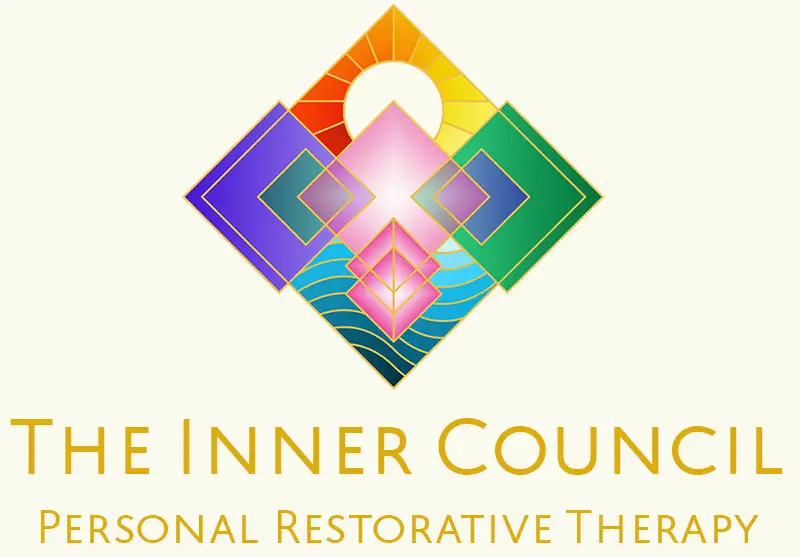BOOK YOUR WORKSHOP TODAY
All posts published here are presented as casual conversation pieces to provoke thought in some direction or another, they do not necessarily represent fixed opinions of the Inner Council, as our work exists beyond the spectrum of bound statement and singular clause.
Transform the inner critic by reconnecting with your Inner Child. Learn how early beliefs form, how to soften self-judgment, and how to rebuild inner safety and trust.
Key Takeaways
- The inner critic forms in childhood as a protective response to shame, fear, and unmet needs.
- Early messages of “not enough” become internal beliefs carried into adulthood.
- The critic feels powerful because the nervous system links criticism with social survival.
- Inner Child work softens the critic by meeting it with compassion instead of fear.
- Re-parenting practices help create an internal secure attachment rooted in safety.
- As the critic transforms, the Inner Child emerges with confidence, trust, and freedom.
Meeting the Inner Critic: How Negative Self-Talk Impacts the Inner Child
It can feel ominous to imagine that somewhere inside us lives an internal voice whose role is to criticise, shame, or undermine our decisions. Yet in archetypal and inner child work, the “inner critic” is very real. It represents the accumulated voice of doubt, fear, guilt, and unworthiness that formed through our early experiences with the world. Many people know this voice intimately:
- “You’re not good enough…”
- “How could you let this happen again?”
- “Why do you always screw things up?”
- “You don’t deserve good things.”
- “I knew you’d make the wrong choice.”
The inner critic does not begin as cruelty. It begins as protection. A child who learns that mistakes lead to rejection, punishment, or humiliation will try to keep themselves “safe” by anticipating the criticism before anyone else can speak it aloud.
Where Does the Inner Critic Begin?
During the primary developmental stage (ages 0–7), children are highly impressionable. They absorb everything: tone, atmosphere, moods, words, arguments, silence, tension, affection, withdrawal, and approval. With an egocentric worldview that has not yet developed reason, the child assumes:
“If something feels wrong, it must be because of me.”
Comments that adults forget instantly can imprint deeply on a child who has no ability to contextualise them. Even when criticism is not directed at the child, a parent judging themselves harshly, insulting someone else, or speaking shamefully about mistakes, the child internalises the emotional code:
Mistakes = danger
Vulnerability = weakness
Being yourself = not always safe
These early messages crystallise into the beginnings of a critical inner voice.
How the Inner Critic Forms Over Time
The inner critic grows as external judgement becomes internal belief. It is not only shaped by parents, but also by teachers, peers, siblings, coaches, bosses, religious environments, or culture. Every time we received the message that we were “too much,” “not enough,” “wrong,” “stupid,” or “difficult,” the inner critic gained authority.
The voice may have sounded like:
- “Do it again, and this time do it properly.”
- “What’s wrong with you?”
- “You can’t be trusted to make good decisions.”
- “Just stay quiet. You embarrass yourself.”
- “Other people are more capable than you.”
Over time, the external voices fall silent, but the internal one continues the job. This is why people with strong inner critics often become highly successful, highly anxious, or both. They live with an internal pressure system that never allows rest or self-compassion.
Why the Inner Critic Feels So Powerful
Negative self-talk has a biological advantage: it is designed to keep us alert, cautious, and safe. The nervous system registers criticism as social threat — and humans are wired to fear exclusion. So the critic learns to scan ahead and “warn” us before someone else does.
However, what once protected the child becomes a prison for the adult.
The voice becomes outdated, rigid, and disconnected from present reality. It speaks in absolutes.
It assumes the future will repeat the past.
It denies new possibilities, new experiences, and new identity.
One simple truth helps weaken its authority:
- Every day of your adult life is a new landscape.
- The inner critic is speaking with the information of a child.
- It cannot see what is unfolding, only what has been.
This is why replacing old internal narratives with new, encouraging ones requires repetition and conscious effort. Just as the critic was trained, self-compassion can be trained
How Inner Child Work Softens the Inner Critic
In inner child work, the critic is not the enemy.
It is a part of self that is exhausted from trying to keep us safe.
When we meet the critic with hostility, we strengthen it.
When we meet it with curiosity, compassion, and boundaries, we disarm it.
Often, the critic can be traced back to a single voice or moment:
- A parent who was overwhelmed and spoke sharply
- A teacher who humiliated us for a mistake
- A peer who mocked our vulnerability
- A culture that demanded perfection
The inner child remembers the pain
and the critic tries to prevent it from ever happening again.
Through guided work, we separate who we are now from who we had to be then.
We learn to speak to the critic the way an emotionally safe parent would speak to a frightened child:
“I see you. I know you are trying to protect me.
But I am safe now, and I am capable.”
With time, the critic becomes less of a tyrant and more of a messenger, alerting us to insecurity rather than controlling us with it.
Re-Parenting the Mind
To calm the inner critic, we must develop new internal leadership.
This is not done by force, but by presence.
- Mindfulness helps us notice the voice rather than obey it.
- Breathwork and grounding bring the nervous system back to safety.
- Inner child work allows us to unlearn outdated beliefs.
- Repetition builds a new internal dialogue.
- Compassion restores self-trust.
Sometimes we must speak aloud the sentences we never heard as children:
“You are allowed to make mistakes.”
“You are worthy of good things.”
“You do not need to earn love to deserve it.”
“You are learning, and learning takes time.”
A critic cannot survive where gentleness is consistent.
From Inner Critic to Inner Ally
With intentional practice, the inner critic becomes integrated.
It is no longer a fragmented voice of shame, but a part of the psyche that relaxes into trust.
Instead of tearing us down, it can remind us:
- to prepare
- to reflect
- to choose wisely
- to honour our boundaries
- to pursue what matters
This is the heart of inner child work—bringing all parts of self back into wholeness.
When the critic is met and understood, the inner child no longer hides.
And when the inner child no longer hides, the adult self becomes free.
A Simple Practice to Quiet the Inner Critic
When the inner critic appears, it is tempting to push it away or argue with it. Paradoxically, that gives it more power. A gentle and effective practice is to witness the voice without believing it.
- Pause and Notice
When you hear the negative thought arise, stop and label it:
“This is my inner critic speaking.” - Separate the Voice
Say — out loud or internally:
“This voice is old. It is not who I am in this moment.” - Bring in the Inner Child
Imagine the younger version of you — five, six, seven years old — hearing those words.
What does that child feel?
What would they need instead? - Offer the Correction
Speak the opposite sentiment as if you are talking directly to the child:- “You are doing your best.”
- “You deserve patience, not pressure.”
- “You are learning, not failing.”
This practice may feel awkward at first, but with repetition the brain begins to form a new pathway — one where compassion speaks louder than criticism. The critic loses its authority and becomes something we can observe instead of obey.
Reclaiming the Voice of the Inner Child
When we recognise the inner critic, we also uncover something deeper: the places where a younger version of us once felt unheard, shamed, or unsupported. Many people discover that the critic is not an enemy at all, but a frightened messenger from childhood, still trying to protect us from being hurt again.
Inner child work allows us to return to those moments with gentleness—not to relive the pain, but to rewrite the story. We learn to speak to ourselves the way we always needed someone to speak to us:
with patience, with reassurance, with acknowledgment of how hard it is to grow in a world full of judgment.
This is the heart of the Inner Council’s workshops. We do not try to silence the critic by force. We meet it with understanding, trace it back to its origins, and show the inner child that there is a safer, kinder way to relate to themselves. Step by step, the inner critic transforms from a harsh judge into a signal—a moment that invites healing instead of punishment.
When people reconnect to the child within, something powerful happens:
- They no longer believe every negative thought.
- They become the adult their younger self needed.
- They reclaim a voice that is encouraging, grounded, and deeply human.
Click here for more Inner Child Exercises.
If this resonates and you’d like to find out more, please read more about the Inner Child Workshop.





